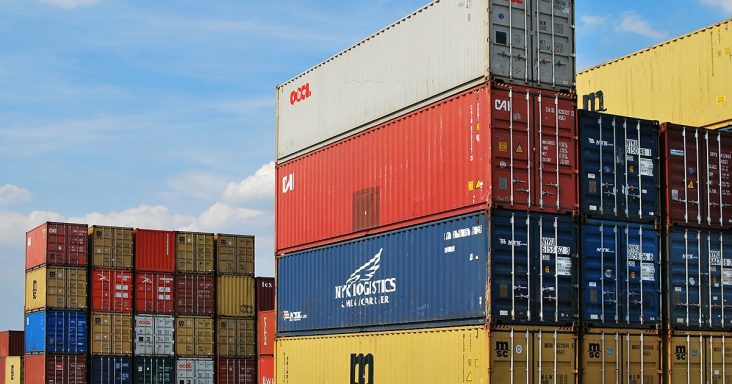Retailers rush to import goods in wake of trade tension
by December 7, 2018 12:24 pm 319 views

Imports on goods from China continue to set records, with two million containers reaching U.S. ports in October, according to the monthly Global Port Tracker report released Friday (Dec. 7) by the National Retail Federation and Hackett Associates. In recent months retailers have been rushing to beat the tariffs that have now been postponed during a 90-day moratorium agreed to by the U.S. and China.
“President Trump declared a temporary truce in the trade war, but these imports came in before that announcement was made,” NRF Vice President for Supply Chain and Customs Policy Jonathan Gold said. “We hope that the temporary stand-down becomes permanent, but in the meantime, there has been a rush to bring merchandise in before existing tariffs go up or new ones can be imposed. China’s abuses of trade policy need to be addressed, but tariffs that drive up prices for American families and costs for U.S. businesses are not the answer.”
The Chinese government announced this week plans to promptly carry out a tariff cease-fire with Washington in hopes of reaching a trade agreement to avoid disruptions in the future. National Economic Council Director Larry Kudlow said Friday he’s optimistic regarding the messages out of China that real progress will be made on trade in the coming weeks.
In October, the latest month numbers are available, U.S. ports handled 2.04 twenty-foot equivalent units (TEU; shipping containers), freight volume rose 9% from September and increased 13.6% year-over-year, according to Global Port Tracker. The October number was the highest for a single month since Global Port Tracker began counting cargo in 2000, topping the previous record of 1.9 million TEU set in July, which in turn had beat a record of 1.83 million TEU set in August 2017.
Hackett Associates estimates 2.01 million TEU for November, a 14% increase year-over-year. December volume is usually lower as holiday merchandise is already received. The December forecast is 1.83 million TEU, up 6.1% from last year. Those numbers would bring 2018 to a total of 21.8 million TEU, an increase of 6.5% over last year’s record 20.5 million TEU.
Hackett expects year-over-year growth rates and total volume to slow considerably in January when 10% tariffs on $200 billion worth of Chinese products that took effect in September had been scheduled to increase to 25%, unless China and U.S reach a trade deal in the next 90 days.
Kudlow said the there is a real opportunity to make some progress on trade issues with China, but the U.S. is willing to push ahead with the tariffs unless the major issues around IP theft, forced technology transfers, cyber hacking, and cyber theft are dealt with. He said “China’s willingness to talk is positive, but it has to be trust and verify. Color me optimistic for now,” he said during an interview on CNBC Friday.
Hackett forecasts January 2019 imports at 1.72 million TEU, down 2.1% from the prior year. February imports are expected to reach 1.67 million TEU, down 1% year over year. Imports are expected to increase in March and April 2019, up 1.7% and 3.7%, respectively from the prior year.
“We see a significant slowdown in import growth in 2019 as the market adjusts to higher prices due to the Trump tariffs and the impact on consumer and industry confidence going forward,” Hackett Associates founder Ben Hackett said. “We project that imports at our monitored ports will have grown significantly in 2018 but that there will be no import growth in the first half of 2019 compared with the same period in 2018.”
Cargo numbers do not directly correlate with retail sales, but the National Retail Federation said the rise in imports in 2018 related to what has been a strong year overall of retail sales. Holiday sales at retail are poised to exceed $1 trillion for the first time history, according to eMarketer, which pegs holiday sales to rise 5.8% from last year.
The NRF expects retail sales for all of 2018 to be up 4.5% over 2017.
